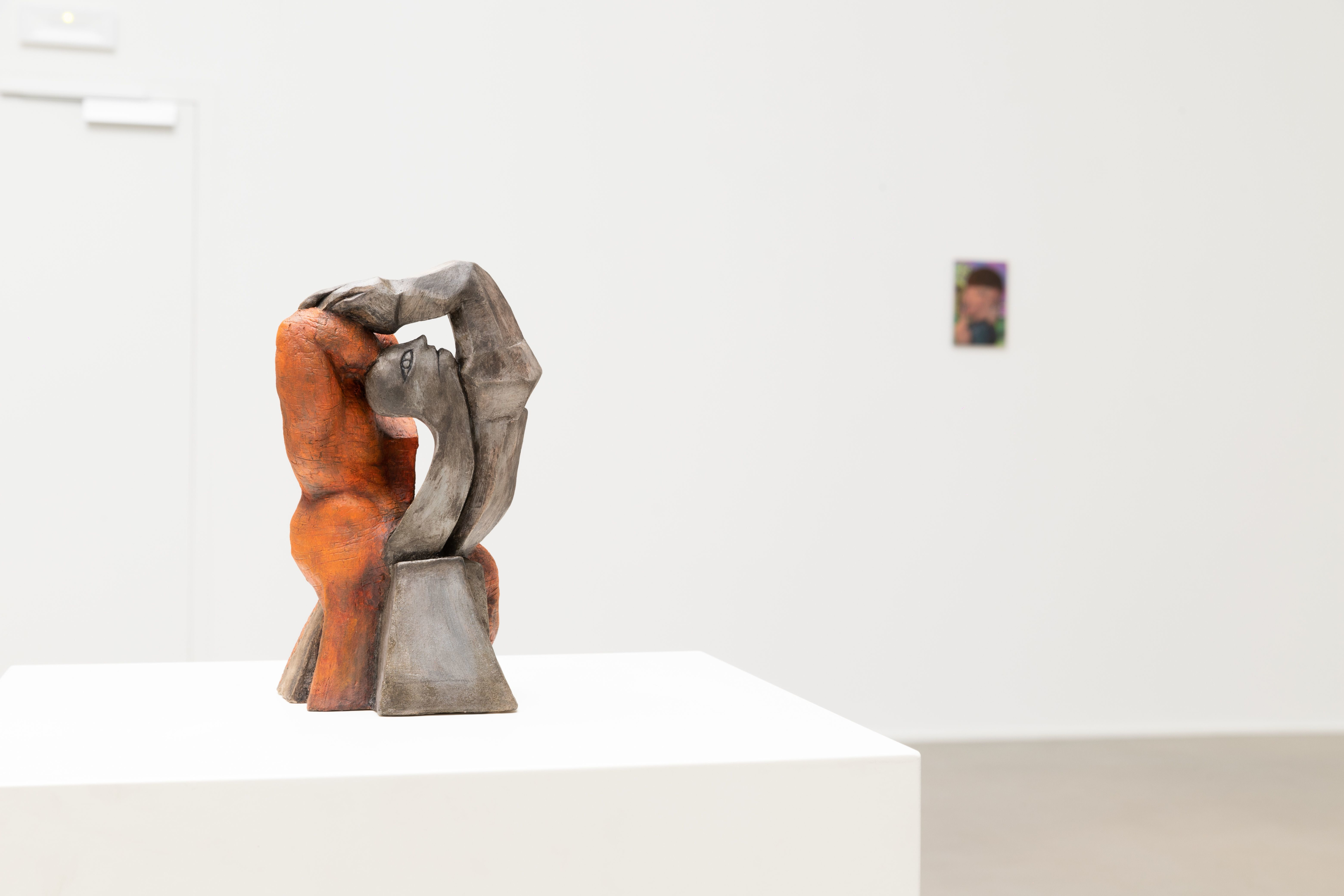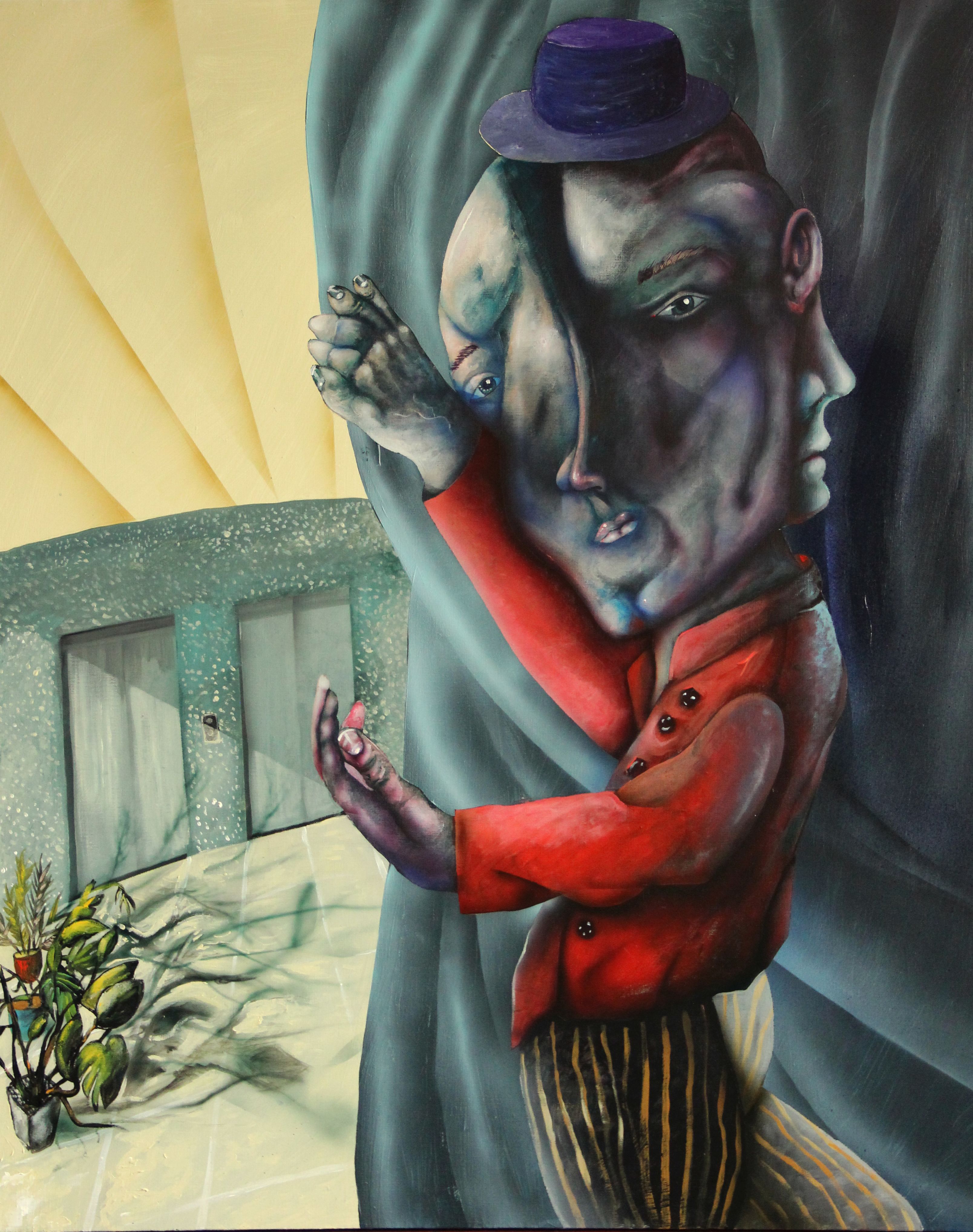20 february 2025, Editorial team
Szaweł Płóciennik: the machines for living
A city never stands still. It grows, changes, and forgets. But in the work of Polish artist Szaweł Płóciennik (b. 1987, Warsaw), the city remembers, not just its architecture, but also the people who shaped it. Through paintings and sculptures, Szaweł captures the fading presence of a community once intertwined with the urban landscape. His latest exhibition, 'The Machines for Living', at Uitstalling Gallery, is deeply personal yet universally resonant, drawing from his childhood memories and political shifts in post-Soviet Poland.
A Childhood in the Iron Gate Estate
Szaweł grew up in Warsaw’s Iron Gate Estate, a vast brutalist complex built during the Soviet era. "It’s a very important place for me," he reflects. "A lot of memories from my childhood are tied to it." In the 1970s, it symbolised socialist progress, but by the 1990s, as Poland transitioned to capitalism, the estate changed and it was the home of workers, musicians, teachers and underground subcultures. "The old system was collapsing, and there were no new rules yet," he recalls.
Before turning to painting, Szaweł was immersed in music and storytelling. He played in a cold wave band and created graphic novels based on local figures like hippie Krzysztof “Pinki” Brandt and philosopher Sławomir Gołaszewski. "I always like to tell stories," he says. "The medium is just a medium. You can put your stories in songs, in comic books, or in paintings." His first comic book, for instance, was based on his father’s memories of the estate in the 1980s, filled with tales of punk bands and underground culture.
A Shifting Narrative
As his practice evolved, Szaweł moved from reportage-style comics to painting, exploring identity and transformation inspired by Slavic pagan traditions. His paintings focus on the body, its distortions, ambiguities, and fluidity. "I like deformation in my bodies and I like that my creatures don’t have a gender," he explains.
A recent period of therapy unlocked a new approach, making his work more autobiographical. "All my childhood memories struck me again," he says. "And then I realised I could put my own memories into my work."
The City Speaks
In his latest work, Szaweł turns to the city itself, its bricks, its concrete, its voices, and its silence. The Bricks Are Screaming (2024) and Concrete Doesn't Speak (2025) reflect the transformation of his childhood neighbourhood. Influenced by Polish post-war painter Bronisław Wojciech Linke (1906-1962), whose "brick figures" embodied trauma, Szaweł’s work responds to the tension between past and present. "Now the estate is surrounded by shiny glass buildings," he notes. "The old community is gone. People don’t meet outside anymore."
But it is not just the surroundings that have changed, it is the social fabric within the estate itself. The mix of workers, musicians, and outsiders that once defined the area has faded, replaced by a new urban rhythm that feels detached from its past. Many of Szaweł’s paintings pay tribute to those who shaped his childhood, like Lonek. "Lonek was always at the entrance of our building, opening the doors for everyone," he recalls. "He couldn’t speak properly, just made some noises but everyone liked him very much. He was like the guardian of our block."
The painting preserves not just Lonek’s presence but also invites viewers to step into their own memories. "I like to establish a non-verbal dialogue between me and the spectators," he says. "You can always develop your own myths."
Perhaps, in the end, the city is never truly silent. As long as Szaweł paints his memories, Lonek still stands at the door.



